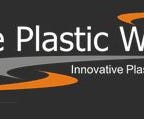What is the Difference Between Vacuum Forming and Thermoforming?
In this article, we will address the following questions: What is vacuum forming? What is thermoforming? How can a purchaser access reliable, up-to-date advice when specifying plastic components from suppliers?
For manufacturers or parts suppliers who use or sell plastic components or products which incorporate them, quality control is a key consideration. You need to know that the items you receive from your suppliers are up to scratch and that they will perform as required, while still representing a good value in terms of unit costs.
For customers who are not thoroughly familiar with plastic component production methods, analyzing competing propositions and quotations for your business can prove confusing. You may have been told that a certain type of material or production process is best for your purposes, or you may be drawing on experience with plastics companies to inform your current choices.
At The Plastic Works, we highly value our customer’s opinions and are always ready to listen to your concerns regarding any aspect of the items we produce for you. However, the field of plastics manufacturing is constantly evolving, and by staying up to date with the latest developments, we maintain a level of expertise that we believe can add value to any proposition.
For example, some customers are unaware of the difference between vacuum forming and thermoforming, and use these terms interchangeably in their communications with us. Let’s take a brief look at what these two phrases mean, and how working closely with our team can help to avoid confusion when it comes to placing an order for prototypes, tooling, and especially mass-produced items.
What is Thermoforming?
The word ‘thermoforming’ is made up of two elements: ‘thermo’ means ‘heat’, while ‘forming’ means moulding something to shape. Any operation which uses heat to shape plastic products is, therefore, a thermoforming process. These include vacuum forming, pressure forming, and numerous other variations, each with its advantages and drawbacks. Simply commissioning a supplier to produce an item using thermoforming, without considering requirements such as compressive strength of the processed material, dimensional consistency, or finish texture, may lead to your receiving a consignment of pieces that are not suitable for your purposes.
What is Vacuum Forming?
Vacuum forming has become the go-to thermoforming process for many manufacturers, as it offers many advantages such as larger part capacity, faster cycle times, and lower tooling costs than comparable methods. It can also be used in conjunction with a wide range of plastic types. Still, just because one combination of material and process can produce an acceptable result, that doesn’t mean that other options won’t be found to do the job to a higher standard, or at a lower cost.
So, instead of simply working within the production framework you have grown used to, why not contact our team and explore options which could make your product even better or your business yet more efficient? Let us worry about the jargon, while you reap the benefits!
